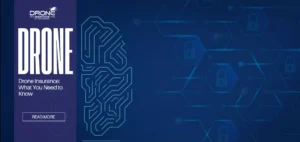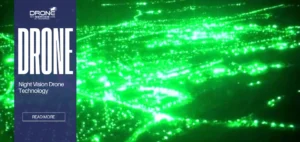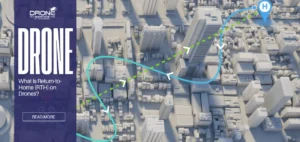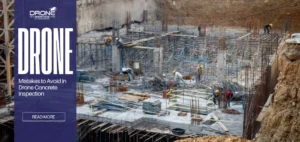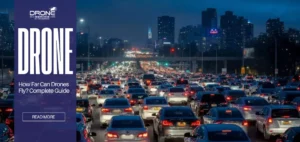Agriculture Drones in 2025: How Drones Are Revolutionizing Modern Farming
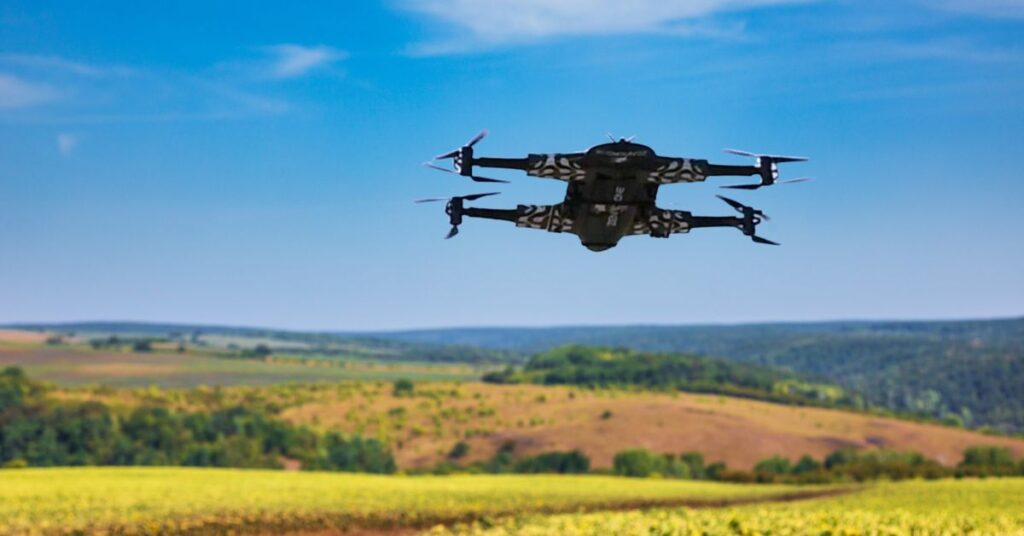
Introduction
The agriculture industry faces many challenges from a growing global population and shifting weather patterns to the need for sustainable systems. Fortunately, there is a revolutionary solution with advanced payload capabilities and precision sensors, drones will bring much more capability beyond simple flying camera systems.
Agriculture drones are adding intelligence, mobility, and precision to how food is grown, harvested, and managed. In this article, let us explore how drone precision agriculture is revolutionizing the future through artificial intelligence, IoT, and automation including the agri drone price.
The Precision Platforms: What Constitutes a Modern Agricultural Drone?
An agriculture drone is created for commercial farming purposes. Unlike basic consumer drones, these heavy-duty machines feature enhanced hardware and integrated software to execute complex, field-specific missions with pinpoint accuracy.
Central to a drone’s operation is its ability to use flight control with actionable tasks:
- Autonomous Flight Software: Allows pre-programmed flight paths, real-time terrain following, and obstacle avoidance for complex operations with minimal human interaction.
- High-Precision GPS/RTK (Real-Time Kinematic): Enables centimeter-level accuracy necessary for tasks such as spraying, targeted planting, and generating geo-referenced maps.
- Specialized Payloads: Drones act as transport platforms for sensors (data collection) or tanks and dispersal systems (applications).
You may love to read also: How Drones and Cloud Platforms Work Together for Real-Time Data Insights?
Major Types of Agriculture Drones Used in 2025
Agriculture drones can be grouped into four categories or roles within the agricultural cycle:
1. Mapping / Scouting Drones (field surveying, terrain analysis)
- Provide the “eyes” of precision agriculture drones, lighter and longer-flight models that cover large areas quickly.
- Function: Collecting data and mapping high-resolution imagery for diagnostics.
- Key Equipment: Advanced sensors. multispectral, hyperspectral, and thermal cameras.
- LiDAR: LiDAR used for high-resolution three-dimensional topographical mapping.
2. Spraying / Heavy-Lift Drones (pesticide & fertilizer application)
- These drones provide the “hands” of precision agriculture, heavy-duty and stable, built to carry loads and withstand field conditions.
- Function: Executing precision or targeted applications of inputs.
- Key Equipment: Large tanks for liquid or granular fertilizer or chemicals.
- Precision Spraying Systems: Nozzles and pumps for Variable Rate Application (VRA).
3. Seeding Drones – Automated Seed Planting
- Designed to perform the mechanical work of seed dispersal in challenging terrain.
- Function: Automated, accurate planting of seeds under difficult conditions.
- Key Equipment: Specialized granule-dispensing payloads, customized flight-plan software, and larger payload capacity.
- Obstacle Avoidance: Can travel through fields with standing crops or obstacles when applying cover crops.
4. Monitoring Drones – Crop Health & Irrigation Management
- Specialized scouts observing plant health and the surrounding micro-environment.
- Function: Monitoring crop growth, detecting stress (disease, nutrient, water), and assisting in irrigation planning.
- Key Equipment: Multispectral cameras (NDVI or health indices), thermal cameras (for water stress and temperature), and high-resolution RGB cameras for inspections and stand counts.
- Data Analytics: Simplifies the process of converting raw sensor information into real-time, actionable health and irrigation reports.
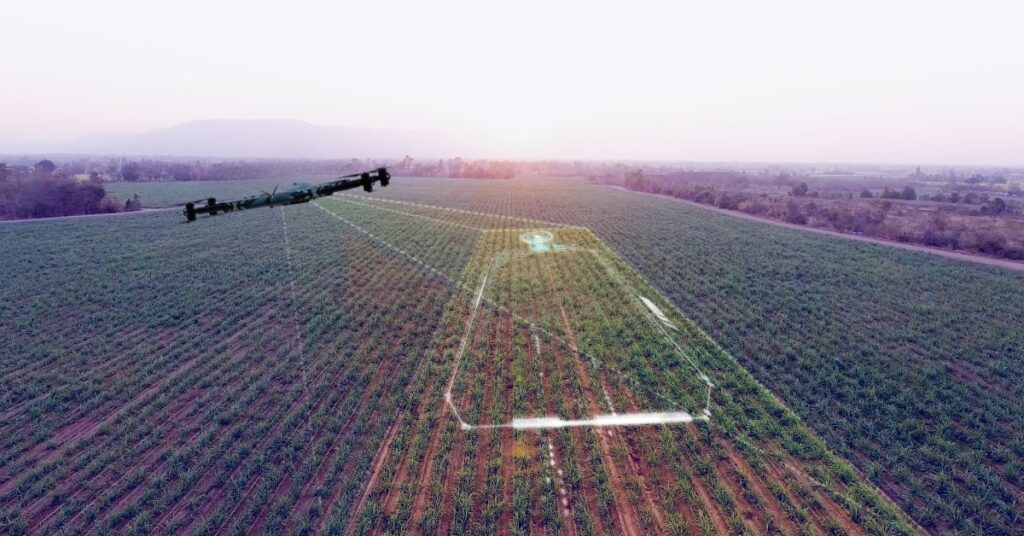
Key Benefits of Using Agriculture Drones in Precision Farming
Integrating drones into today’s agricultural practices enhances efficiency, profitability, and sustainability. Drones are the foundation of smart farming by transforming farm work from generalized guessing to precise, site-specific actions that optimize yield.
Drones provide improved management of resources and crop health through the following methods:
- Better Crop Monitoring Precision: Creating high-resolution, multispectral terrain imaging, and thermal images that reveal crop stress, disease, or nutrient deficiencies days or weeks before symptoms appear enabling proactive intervention.
- Reduced Chemical Use (by 40%): Drone precision spraying targets only specific areas needing treatment, minimizing spillage, reducing costs, and lowering environmental impact.
- Improved Spraying and Fertilizer Use: Using VRA maps generated with increased accuracy, drones distribute inputs with centimeter-level precision delivering exactly what each crop area needs.
- Better Water Management: Drone thermal data identifies light and water stress zones, helping farmers adjust irrigation schedules and water volume for maximum efficiency.
- Improved Decision-Making with Visual Data: Farmers receive live aerial imagery to make quick, data-driven decisions on planting, treatment, and harvesting.
- Reduced Labor Costs: Automating scouting, mapping, and application tasks frees human labor for other critical farm management duties, boosting productivity.
Precision Agriculture with Drones: How AI is Transforming Farming
Artificial Intelligence (AI) and machine learning are being integrated into farming, turning drone-captured imagery into intelligent, actionable insights.
- Real-Time Crop Health: Drones collect IoT and sensor-based data processed through edge computing for real-time decisions. NDVI AI detection quickly assesses vegetation, enabling early disease and nutrient stress detection.
- Intelligent Interventions: AI algorithms convert health maps into Variable Rate Application (VRA) prescriptions, instructing autonomous drones exactly where and how much to spray.
- Predictive Analytics: Combining drone and weather data with historical patterns enables predictive analytics for yield forecasting transforming farming from manual observation to intelligent, machine-driven management powered by modern UAV technology.
Agricultural Drone Technology Stack: The Modern UAV
Today’s agricultural drone is a sophisticated system combining top-tier hardware and intelligent software for precision farming.
Hardware
The drone’s structure includes powerful rotors and long-lasting batteries, but the core lies in its specialized onboard equipment:
- Sensors: Multispectral sensors (NIR, Red Edge), thermal cameras, and LiDAR form the leading edge of UAV imaging technology.
- Payload: Capacity to carry application systems (low-volume spray tanks) and/or perform advanced data collection.
Software
Software manages UAV missions and analyzes collected data:
- Flight Control: Enables precise, automated flight paths and ensures safe, stable operation.
- AI Analytics: Cloud-based software that processes raw data through machine learning and photogrammetry to generate 3D scanning models and actionable insights.
Connectivity
Ensures accuracy and seamless data transmission:
- GPS + RTK (Real-Time Kinematic): Provides centimeter-level positioning for precision applications and GIS mapping.
- 5G / Cloud Sync: Enables high-speed transfer and processing of large datasets.
Data Outputs
Deliverables that empower farmers:
- NDVI, NIR, Thermal Maps: Actionable visuals used to assess crop health and stress.
- GIS-Ready Maps: Geo-referenced datasets compatible with farm management software.
Cost and ROI: Evaluating Drone Expenses and Value in Agriculture (2025)
The financial investment for adopting drone technology varies, but its ROI in precision agriculture remains highly attractive.
Explaining Price Variability
The spray drone price and overall investment depend heavily on drone capability and the farmer’s approach to adoption:
- Entry Mapping Drone: Price range ~$5,000–$15,000
- Smaller drones focused on scouting or creating basic health maps (NDVI, RGB).
- Affordable entry point but lacks spraying capability.
- Professional Spray / Heavy-Lift Systems: Price range ~$25,000–$70,000+
- Industrial-grade UAVs capable of spraying and seeding with high weight capacity.
- Though costly, these systems justify their expense through increased efficiency.
- DaaS: Drone as a Service (DaaS) pay-per-acre or per-service model
- No upfront hardware cost and minimal training required.
- Farmers can simply pay for mapping or spraying services on-demand or by subscription, eliminating maintenance responsibilities.
Calculating the Return on Investment
The value of drones is defined by measurable savings and efficiency gains, offering a strong ROI in farming:
- Pesticide & Input Reduction: Variable Rate Application (VRA) can cut chemical use by 30–45%, reducing waste through targeted spraying using agri spray drones.
- Yield Improvements: Early, accurate responses to pest or nutrient issues can boost yields by 15–20%, directly increasing revenue.
- Operational Efficiency: Drones reduce labor hours and fuel costs by covering fields faster and ensuring timely treatments that prevent large-scale crop damage.
Top Challenges in Adopting Agriculture Drones and the Solutions
While precision agriculture UAVs provide tremendous value, farmers and drone service providers experience significant challenges with the technology and the regulatory and operational limitations that are often associated with it.
| Challenge | Description | Mitigation and Tips |
|---|---|---|
| Legal Regulations & Flight Permissions | Strict regulations concerning drone operations (especially restrictions around Beyond Visual Line of Sight – BVLOS). Drone licensing and compliance with pilot training and safety requirements limit operational possibilities and make large-scale coordination less efficient. |
Choose Certified Service Providers: Drone service providers often require licensed pilots and proper paperwork to meet regulatory requirements. Managing documentation effectively enables access to work beyond visual line of sight. |
| Weather & Battery Life Limitations | Limited endurance when carrying heavy payloads (like spray tanks) in adverse weather. These same challenges reduce flight time and efficiency. Poor battery optimization can cause frequent downtime, reducing coverage speed and productivity. |
Consider All-Weather Design and Battery Optimization: Industrial-grade drones with higher-quality gear or rated equipment improve endurance. Following battery best practices helps minimize downtime and maximize flight time. |
| Data Privacy & Security Concerns | Agriculture drones gather highly sensitive and detailed spatial data, raising questions about ownership, privacy, and the risk of hacking or unauthorized access. | Use Secure Cloud Platforms: Opt for services offering encrypted storage protocols and clear data ownership management. At a minimum, ensure collected data is stored locally or in secure environments before any upload. |
The best way to manage these challenges is to work with reputable drone companies that understand the regulatory process and invest in durable hardware, ensuring more reliable and efficient operations.
The Future of Agriculture Drones: What’s Coming Next (2025–2030)
The years 2025 to 2030 will be exciting for precision agriculture drones. The technology will evolve into a fully autonomous, AI-driven ecosystem connected through high-speed networks—enabling sustainable, intelligent agri-tech. PR Newswire says, “Agriculture Drones Market worth USD 10.76 billion by 2030” (MarketsandMarkets) details growth from 2025 to 2030″.
Key Developments Include:
AI Swarm Drones
- A single operator will manage coordinated fleets of autonomous UAVs (swarm drones).
- For example, a scouting drone will detect a problem and trigger a swarm of sprayers to deploy inputs exactly where needed.
Integration with Robotics
- Drones will act as aerial sensors that direct ground-based machinery.
- Drone-generated health maps will guide autonomous tractors and field robots with high precision, enhancing efficiency and reducing labor needs.
Predictive Climate-Adaptive Modeling
- Predictive analytics will combine drone data (thermal, NDVI) with satellite imagery and weather models via 5G UAV connectivity.
- This will enable proactive, adaptive decision-making by forecasting risks such as pest outbreaks or drought stress weeks in advance.
Government Incentives
- Recognizing the role of agri-tech in climate resilience and food security, governments are offering subsidies and programs to promote sustainable drone adoption.
FAQ Section: Agriculture Drones in 2025
What are agriculture drones used for?
Agriculture drones are valuable for high-resolution mapping, crop health inspection, precision spraying/fertilization, seeding and livestock management.
How much does an agri spray drone cost in 2025?
Basic systems will start at $25,000, while heavier-duty professional systems may exceed $70,000. Many farmers use Drone-as-a-Service (DaaS).
Are drones legal for farm spraying?
Yes, but with regulatory approval and pilot must have a license in place for commercial use, especially if the job is more than beyond line-of-sight.
How accurate are precision agriculture drones?
Using RTK GPS, UAVs can offer centimeter-level (sub-inch) accuracy for data collection and appropriate application.
What data do agriculture drones collect?
They capture multi-spectral (NDVI) imagery, thermal imagery and high-res RGB. All of this can provide data about plant health, drought stress, and topography of the land.
Can agriculture drones help with yield forecasting?
Yes, by tracking biomass and health during the whole growing season, AI will use drone data and create accurate predictive models for yield prediction.
Agriculture Drones and the Future of Smart Farming
The era of precision agriculture is upon us, and agricultural UAVs are the core technology making it possible. Drones deliver great, quantifiable benefits to farmers, fueling both profit and sustainability. Large reductions (up to 45%) in pesticide use and water consumption are possible with drones and farming technologies, while improving overall yields as they provide real-time, hyper-accurate data.
The ROI is attained through firm efficiencies and targeted treatments, moving agriculture and farming away from generalized practices. Ultimately, the integration of the drone technology in the environmental management for farmers is about adopting the technology; it is about ensuring a future for sustainable food production through intelligent smart farming solutions. Drones are the intelligent eyes and hands ensuring our industries can prudently satisfy the needs of a growing global population.
